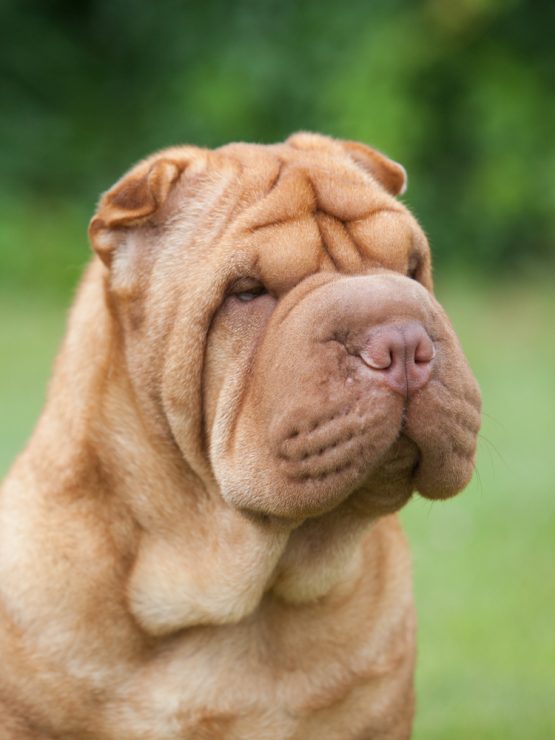
One bad tempered barbarian can ruin your whole day, so imagine the plight of farmers living near the South China Sea two thousand years ago who were constantly skirmishing with barbarian thieves.
In the 9th century, Chen An argued that “the difference between the Chinese and the barbarian is in the heart.” These farmers might have agreed to a point, but they had one more thing going for them that the barbarians didn’t, and that was their dogs.
The Chinese Shar-Pei existed for centuries in the southern provinces of China that bordered on the South China Sea. This all-purpose utility dog was used by peasant farmers of the area to hunt, protect livestock, and in the village of Dahle (once known as a Gamblers Haven) they were contestants in dog fights. Mostly, however, the Shar-Pei served as guardian of his master’s home. His strength and intelligence were appreciated, but in dealing with the thieving barbarians, the dogs were valued for their famous “Warrior Scowl” that would increase his menacing appearance and help intimidate the savages against whom the farmers were always at war. It was the proverbial icing on the cake since these dogs typically stood with a “warrior like stance,” a phrase written in the old breed standard. Few were willing to take on a dog whose body language and expression said, “Don’t mess with me.”
Can a dog “scowl” on purpose? Probably, but in this breed, small almond‐shaped, dark, and deep set eyes heighten a scowling expression already set off by frowning brows and distinct wrinkles between the eyes. This glowering expression is so important to breed type that it’s mentioned in the current standard twice.
Image: DepositPhoto
